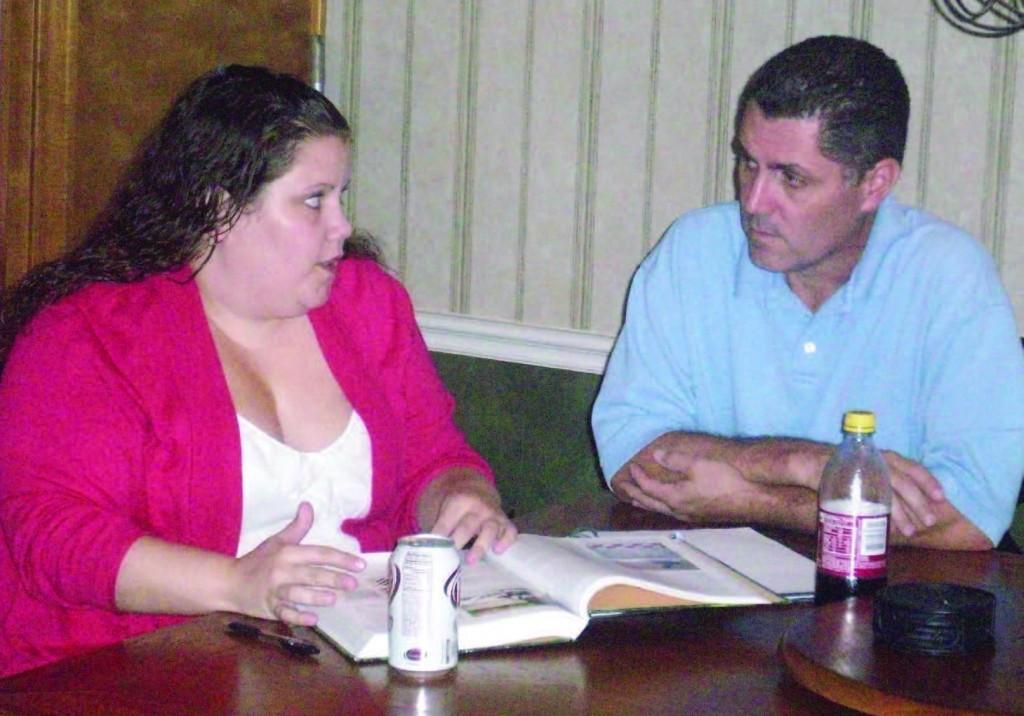By Sandy Hill/reporter
No one-size-fits-all formula exists when it comes to communication styles, said Jamie Kerr, a NE Campus speech instructor, to a group of about 70 students during a seminar last week.
“You very well may be (one style) at work and something very different at home with family and friends,” she said.
Kerr and another speech instructor, Debi Blankenship, spoke to the students during the seminar titled Communicating Effectively: Know Your Style. The goal of the event was to help students learn their natural tendencies when it comes to communicating with others.
“Each style has strengths and weaknesses,” she said. “So depending on the scenario, one style may be the most effective.”
Kerr and Blankenship had students complete a questionnaire and a survey to help them determine their willingness to disclose information and solicit feedback from others.
The students’ answers placed them in one of four communication style categories: blind, hidden, closed or open.
Lietha Thomas, a NE Campus student, said she found it interesting to learn about communication and interpersonal relationships.
“I can see now why someone might act the way they act by the way they communicate,” she said.
“Then, I know how to counter that without getting upset or irritated or wondering ‘What did I do wrong?’”
Once everyone completed the questionnaire, the speakers discussed each category, often using characters of the popular TV show The Office as examples of some styles. They also talked about what each style would look like as a teacher and a student.
“It helped me know a little more about my teachers, their personalities and what to expect out of their teaching,” said Shelly Martin, a NE Campus student.
Blankenship and Kerr kicked off their discussion of the various styles by first talking about the blind communicator, a person who loves to tell others everything they think without requesting feedback in return.
“We sometimes think of them as the expert,” Kerr said. “You might think of them as know-it-alls.”
Blind communicators usually hold leadership positions, Kerr said. She pointed to Bobby Knight, one of the most winning coaches in basketball, as an example.
“Blind leaders are a good thing when the stakes are high, and there is a need to win,” she said.
Advice for blind communicators: listen more and talk less, Blankenship said.
The hidden communicators, also known as people pleasers, are great listeners and often the life of the party, Blankenship said.
“They are very private about things, but they want to know all about you,” she said.
The downside of hidden communicators is they are sometimes viewed as two-faced, Blankenship said, because they agree with everyone.
“They have very strong feelings, but they aren’t going to express them because they don’t want to offend anyone,” she said.
Hidden communicators should consider being more assertive, but not aggressive, Blankenship said.
“Aggressive is a bulldog,” she said. “Assertive is just (standing) up for yourself.”
Unlike the hidden communicator who always wants to know everyone, the closed communicator is private. They prefer to work with things rather than people and keep their feelings to themselves, sometimes seeming standoffish or aloof.
“You might work with them for 25 years and not know one thing about them because their minds are focused on something else,” she said.
To describe the closed communicator in greater detail, Blankenship shared several stories about her father, whom she called a brilliant closed communicator.
She recalled going into his home office to talk to him as a young girl and not getting his full attention.
“When he was in there working, you could just see the wheels turning in his head,” she said.
Closed communicators should think about going out on a limb.
“Put yourself out there and talk to somebody,” Blankenship said.
Lastly, the speakers talked about the open style of communication, referring to those who love to tell others everything and like getting excessive feedback.
Open communicators make good listeners. They are trusting, dependable, direct and honest.
“Most of us have intimate relationships where this is our style,” Kerr said.
“These communicators make great counselors, ministers, HR managers, nurses and social workers.”
Blankenship suggested that open communicators be a little reserved.
“Don’t trust every person that you meet,” Blankenship said. “And don’t tell your life history to every person you meet.”


























